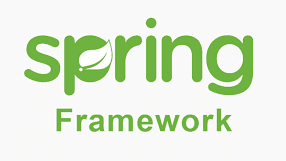Introduction
The Spring Framework (Spring) is an open source software development framework that provides infrastructure support for building primarily Java-based applications. One of the most popular Java Enterprise Edition (Java EE) frameworks, Spring helps developers create high-performing applications using plain old Java objects (POJOs). Other popular Java frameworks include Java Server Faces (JSF), Maven, Hibernate and Struts.
Released in June 2003 by Rod Johnson under the Apache 2.0 license, the Spring Framework is hosted by SourceForge.
Core Concepts of Spring
Core Concepts of Spring are :
- Inversion of Control (IoC) : IoC is a design principle that states that dependencies are received by objects from an external source, usually an IoC container, rather than the objects creating them on their own. This permits objects to have loose coupling, which frees them from being closely tied to a particular implementation of their dependencies. This improves the flexibility, modularity, and testability of the code.
- Dependency Injection (DI) : DI is a particular application of IoC where an object’s dependencies are injected into its constructor or setter methods by the IoC container. For Spring, this is the recommended method of implementing IoC.
- Spring Container : The core element of the Spring framework is the Spring container. It’s in charge of managing, configuring, and instantiating Spring beans. Any item that the Spring container manages is referred to as a Spring bean.
Developing Applications with Spring
For Java developers, creating apps with Spring is a popular option. Spring is an all-inclusive framework that offers a wide range of functionality to assist developers in creating scalable and reliable applications.
The inversion of control (IoC) container offered by Spring is one of its main advantages. IoC enables programmers to loosely connect their code, increasing its flexibility and simplifying testing. Additional dependency injection (DI) technologies offered by Spring make code creation and maintenance even easier.
Spring also provides a variety of other features that make it a popular choice for enterprise development, including:
- Data access
- Messaging
- Remote procedure calls (RPC)
- Web development
- Transaction management
- Security
- Testing
Developers usually build a Spring configuration file that lists the beans that Spring should manage in order to design an application with Spring. Spring manages items called beans, which can be anything from web controllers to data access objects (DAOs).
Advanced Spring Topics
Here are some advanced Spring topics:
- Spring Boot: A framework called Spring Boot makes it simple to develop Spring apps. For many common Spring operations, such database configuration and web development, Spring Boot offers auto-configuration.
- Cloud-native development: Cloud-native applications can be developed with Spring. Cloud computing systems like AWS, Azure, and Google Cloud Platform can be used with Spring apps thanks to support from Spring Boot.
- Microservices: You may create microservices architectures with Spring. Small, autonomous services known as microservices exchange information with one another via APIs. Microservices can be developed and deployed with the help of Spring Boot.
- Reactive programming: A programming approach called reactive programming enables programmers to create more scalable and responsive code. With its Spring Boot Starter WebFlux project, Spring offers support for reactive programming.
- Security: Spring has several tools, including session management, authentication, and authorization, to assist developers in securing their applications.
Conclusion
To sum up, the Spring Framework is an effective and adaptable tool for Java programmers. Dependency Injection makes complicated tasks easier, encouraging clean, maintainable code. With its broad ecosystem that addresses web development, messaging, security, data access, and other areas, Spring is a one-stop shop for contemporary Java applications. It makes it possible to write software that is extremely tested, scalable, and reliable. Microservices and cloud-native development are now possible with Spring Boot. Developers may guarantee the effectiveness and robustness of their apps by adhering to best practices. Because of its extensive documentation, robust community support, and broad adoption, Spring is a framework that is essential for developing modern Java applications.Read about our other post at codingshikho.com
